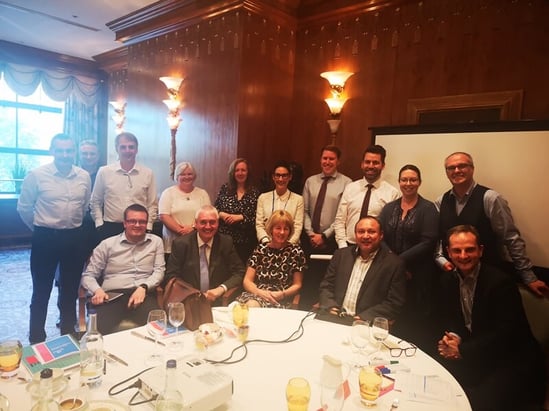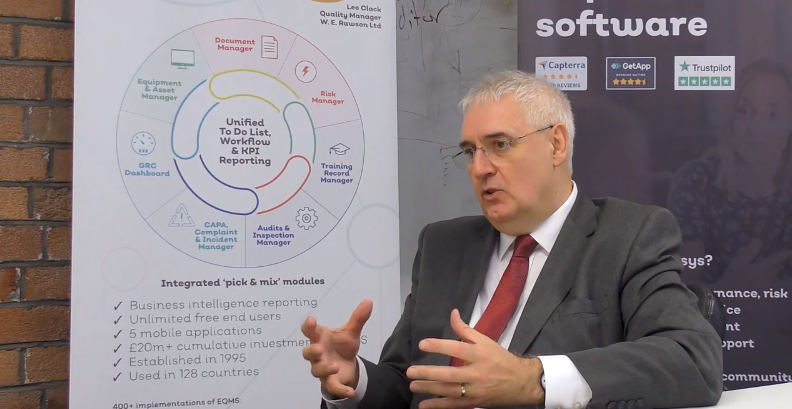Want to contribute to this article?
Every drug, device and clinical company wants to be able to predict how regulations and laws are going to impact their current and future processes.
Last month, during our GxP Product Advisory Group event, we invited Sion Wyn, who assisted the FDA as a consultant with its re-examination of 21 CFR Part 11, to share forecast changes to expect from the FDA and MHRA.
Sion's links with the International Society for Pharmaceutical Engineering (ISPE) and experience working in the industry mean he is in a unique position to see what's on the horizon for the drug, device and clinical sector.
Keep ahead of the game with the five most important FDA and MHRA trends of 2019.

1. Expect pressure to digitise
Fear of excessive validation costs has often meant the industry has been slow to adopt new technologies.
Cost of system validation is often up to two times the amount of the base system cost.
This was an eye opener for the FDA which meant many companies are still relying on manual, paper-based systems. But this causes endless communication, data integrity and quality challenges.
You can expect a lot more pressure from the MHRA and FDA to digitise your management system and more expectations to use a risk based approach to validation.
Read "The Qualsys approach to CSV - 5 FAQs"
2. Focus on culture
The FDA and MHRA wants organisations to use their quality management system as a strategic weapon for competitive advantage, but acknowledges there needs to be a change in mindset for many businesses.
For example, Sion said:
Many used to focus on quality control. Then we moved to quality assurance. The next phase is all about quality improvement.
Quality control --> Quality assurance --> Quality improvement
Here's our culture of quality toolkit to share some ideas, tips and tools with your team.

3. Patient safety
The FDA and MHRA have noted that current complexities in regulation can sometimes make it too challenging for companies to focus on the most important matter - patient safety.
Their priority is ensuring patients have access to high quality, safe and effective medical technologies.
A major goal is simplification which includes aspects of increasing adoption of technologies and how to lean out validation.
4. No more compliance
While the FDA usually evaluates a manufacturer’s compliance based on each requirement in the regulation, in 2017 CDHR launched a new initiative – the Voluntary Medical Device Manufacturing and Product Quality Pilot Program, which set out to encourage organisations to go above and beyond baseline compliance. The group hypothesised that by focusing more on patient safety than compliance, this would result in higher quality outcomes.
Partnering with CMMI, MDCI and other regulatory and industry partners, the aim was to drive continuous improvement and organisational excellence using the maturity model framework.
This was tested by 9 organisations. They benefited from:
- Foregoing surveillance, post approval and risk based FDA inspections
- Streamlining submissions for manufacturing change notices, site changes and PMA notifications
- Simplification. increasing adoption of technology and lean out validation
In the future, we’re likely to see more programs which focus on critical-to-quality rather than line-by-line regulatory compliance.
5. Less focus on administration
The FDA wants to move away from a world where you are excessively worried about complying with 4.1.a, and more of a focus on whether you are addressing key business opportunities, risks and vulnerabilities. In fact, they said 80 percent of your role should be focusing on quality, 20 percent on compliance - not the other way around!

Quality management system software: https://qualsys.co.uk/grc-solutions/products/electronic-quality-management-system-eqms/
See it in action: Case study with York Instruments
No matter how regulations and laws change, quality professionals can future proof their management system through critical thinking and risk based, agile approaches which streamline assurance activity and evidence capture. Find out how this approach is working for Stewart Wilson, Quality Manager at York Instruments who says he now looks forward to being audited.
| Download case study here: |








Share your thoughts on this article